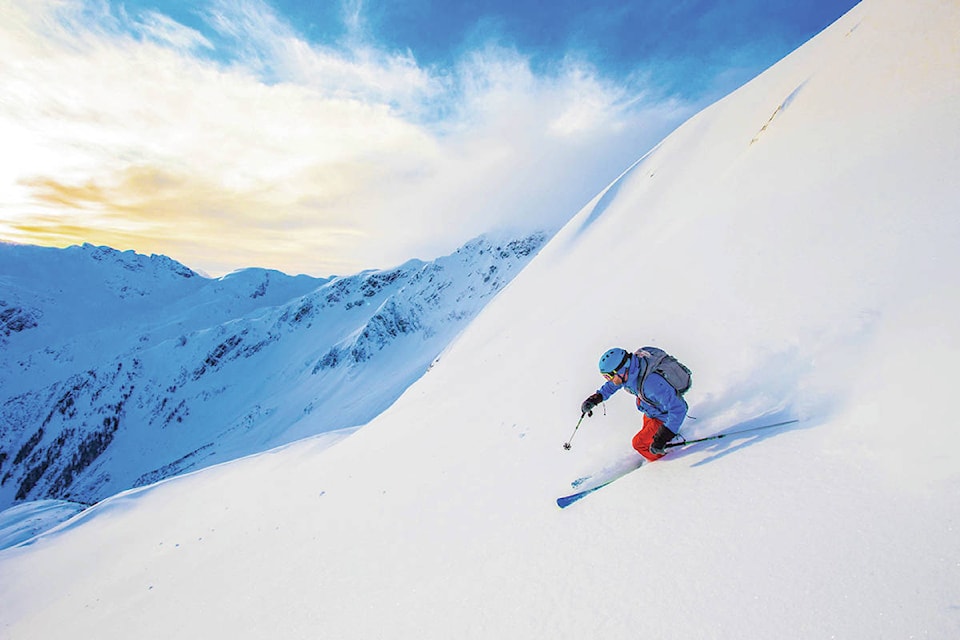Avalanche Canada reported four backcountry skiers had a close call in the Elk Valley on December 15 after triggering a small avalanche that fully buried one of them.
Snowboarder buried in Elk Valley avalanche
The Advance sits down with North American Polaris Ambassador and backcountry enthusiast Trish Drinkle for tips on how to enjoy the backcountry safely this season.
“Highway 3’s Kootenay Pass is a treasured destination for many backcountry riders from around the world. With easy highway access to staging areas, consistent snowfall with snowpack allowing for early and late season adventures, it’s easy to see why many riders enjoy all that the Kootenay Pass has to offer. This is rugged backcountry terrain, not a freshly groomed resort, so it is imperative that you set yourself, and your group up for success by taking appropriate safety precautions.” said Drinkle. “Your adventure should begin by checking the avalanche forecast at www.avalanche.ca under the Kootenay Boundary forecast before your trip. Pay attention to the details under each tab to give a more In-depth picture of the forecast. Read the forecaster’s blog, and check out recent MIN reports (mountain information network) and Environment Canada’s weather forecast for the area to better prepare.”
Be prepared before going out.
Gear, education, and preparation. Do you have an AST 1 Class? This is recommended as the bare minimum for understanding the complex snowpack and microclimate zones in the Kootenay Pass. An avalanche transceiver, shovel, and probe are also must-haves with the knowledge on how to use them. Practice with your gear to familiarize yourself before you head out to crush those gnarly lines.
Have a trip plan.
Trip planning is important not only for planning an epic adventure but for staying safe. This information includes, your staging point, areas you plan to ride, the time you’re expected home and the number in your party. Should you be delayed you will have shared your trip plan with others, not riders, and they will be able to expedite search and rescue efforts.
Communication is key in the backcountry.
Never go out alone, and practice the buddy system, keeping an eye on one another as you ride the slopes. Avalanches can happen but aren’t the only hazard to be aware of. Tree wells and unexpected terrain changes can also create danger if you are riding by yourself. Keep group communication active, and open. If an individual is not feeling well or hesitant about the route, regroup and discuss a safe option that suits the entire party.
“Prepare for an option B and C out there, not allowing yourself to become too destination oriented. Be aware of the snowpack, and changes around you. The snowpack stability can change quickly from zone to zone, so dig a pit, and observe the snowpack around you at all times, being flexible to change your plans as conditions dictate.” said Drinkle. “There is no cell service on the Kootenay Pass, so communication devices such as an In-Reach or SPOT are recommended should your group need assistance,” advises Drinkle. “Utilize the Avalanche Terrain Exposure Scale (ATES) and ride within your ability. You can find ATES ratings on Avalanche Canada’s website. Utilize tools such as an Avaluator and an inclinometer to be able to judge slope angle. There are ample 25 degree runs to enjoy in the backcountry of the Kootenay pass that are much better options during volatile avalanche cycles. Choose your terrain wisely. Following another riders tracks, doesn’t mean you’re safe. Make your own safe decisions continually throughout the day.”
Have fun, and leave with plenty of time to arrive at your staging area during daylight hours. Dealing with a mishap in the daylight is much better than dealing with it in the dark when temperatures drop, and visibility is poor.
editor@crestonvalleyadvance.ca
Like us on Facebook and follow us on Twitter
